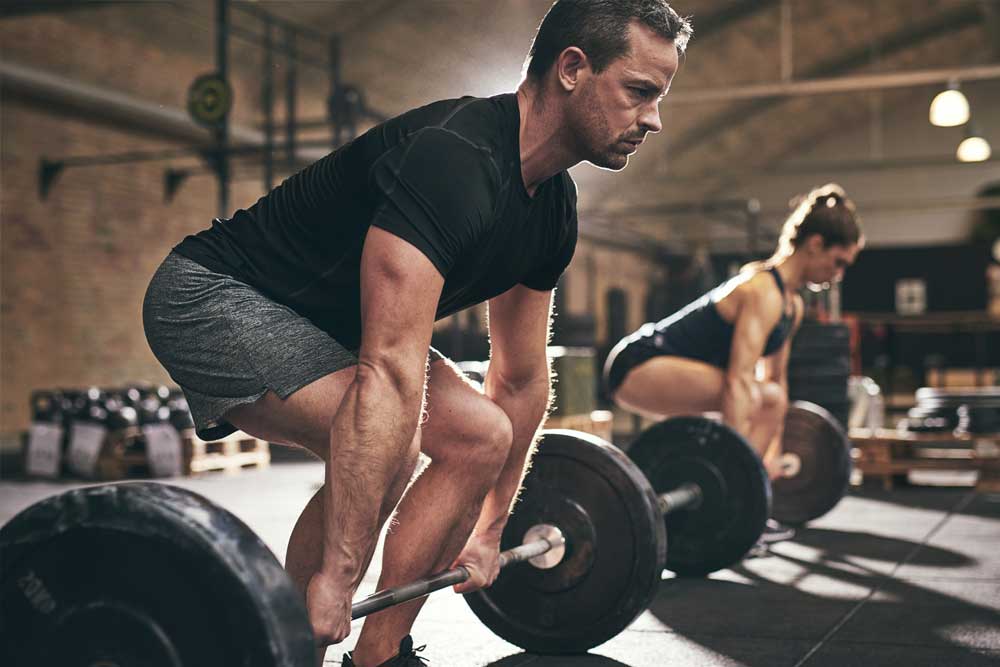Τhe benefits of building muscle

If you’re looking to get fit, adding some muscle to your frame is a great way to do it. Not only does muscle help you burn more calories, even at rest, but it also helps improve your bone density and makes everyday movements easier.
Building muscle can be beneficial for your health in many ways. One way is that it helps increase your metabolism. Muscle is active tissue, meaning that it requires energy (calories) to maintain itself. The more muscle you have, the higher your resting metabolic rate will be, which can help with weight management.
Another benefit of having more muscle is that it can help improve your bone density. This is especially important as we age and our bones start to weaken. Strength-training exercises that target the muscles and bones can help slow down this process and keep us feeling young and spry well into our golden years.
The difference between bulking and cutting

When it comes to fitness, there are two main approaches people take to try to build muscle: bulking and cutting. While both have their advantages, they are very different processes overall. Here’s a look at the key differences between bulking and cutting so you can decide which approach is right for you.
Bulking is all about consuming more calories than you burn off in a day, which gives your body the extra energy it needs to build new muscle tissue. This means eating a lot of protein and healthy fats, as well as complex carbohydrates like whole grains. It can be difficult to bulk up without putting on some fat as well, but if you’re patient and consistent with your diet and lifting routine, you can eventually achieve the desired results.
The importance of weightlifting

Everyone knows that to stay in shape, you need to exercise. But did you know that weightlifting is one of the best exercises you can do to stay fit? Not only does weightlifting help you build muscle, it also helps improve your fitness level and can even help you lose weight.
Weightlifting is a great way to build muscle. When you lift weights, your muscles are put under stress, which forces them to grow. The more muscle you have, the higher your metabolism will be, which means you’ll burn more calories even when you’re not working out.
In addition to building muscle, weightlifting can also help improve your fitness level. lifting weights makes your heart and lungs work harder, which strengthens them over time.
The difference between compound and isolation exercises

Compound exercises are multi-joint movements that work multiple muscles simultaneously. These exercises are the most effective for building muscle and strength. Isolation exercises are single-joint movements that target one muscle group at a time. These exercises are less effective for building muscle, but can be helpful for targeting specific muscles.
Compound exercises should be the foundation of your workout routine, as they provide the most benefit for building muscle and strength. However, isolation exercises can also be helpful for targeting specific muscles groups. When combined with compound exercises, they can help you build a well-rounded physique.
How many reps and sets you should be doing
![]()
When it comes to weightlifting and building muscle, the old adage of “no pain, no gain” couldn’t be more true. But just how much pain should you be in when working out? And how many reps and sets should you be doing to see results?
The answer, unfortunately, is not black and white. It depends on your fitness goals, your current level of fitness, and the amount of time you have to devote to working out. However, there are some general guidelines that can help you determine how many reps and sets you should be doing.
If you’re looking to build muscle, the American Council on Exercise recommends doing 3-5 sets of 8-12 reps. This will help you build strength and endurance.
The importance of rest and recovery

Rest and recovery are an important part of any fitness routine. Without proper rest, our bodies cannot build muscle or repair damage. This can lead to injury and setbacks in our fitness goals.
Getting enough sleep is crucial for rest and recovery. Most people need between 7-9 hours of sleep per night. If you find yourself struggling to get enough sleep, there are a few things you can do to improve your sleep habits.
First, create a bedtime routine and stick to it as much as possible. This will help signal to your body that it’s time to wind down for the night. Secondly, avoid screen time before bed – the blue light from screens can disrupt our natural sleep patterns. Finally, create a comfortable sleeping environment by ensuring your bedroom is dark, quiet, and cool.
Conclusion: How to get started

If you want to build muscle and get fit, there are a few things you need to do. First, you need to make sure you’re getting enough protein. Protein is essential for building muscle, so you need to make sure you’re eating enough of it. You can get protein from meat, fish, eggs, and dairy products. You should also eat plenty of fruits and vegetables. Fruits and vegetables are packed with nutrients that are essential for good health. Second, you need to exercise regularly. Exercise will help you build muscle and keep your body fit. Third, you need to stay hydrated. Drinking plenty of water will help your body function properly and prevent dehydration. Finally, you need to get enough sleep. Sleep is important for recovery and repair after exercise. If you follow these tips, you’ll be on your way to building muscle and getting fit in no time!

![maxresdefault[1]](https://www.viralstories360.com/wp-content/uploads/2022/11/maxresdefault1-696x392.jpg)
